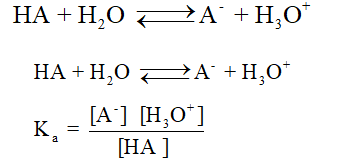Organize the acids in order of decreasing acidity sulfric acid, phosphoric acid, p-toluenesulfonic acid, phenol, 4-nitro phenol, acetic acid, and trifluoroacetic acid
Ionic Equilibrium
Chemical equilibrium and ionic equilibrium are two major concepts in chemistry. Ionic equilibrium deals with the equilibrium involved in an ionization process while chemical equilibrium deals with the equilibrium during a chemical change. Ionic equilibrium is established between the ions and unionized species in a system. Understanding the concept of ionic equilibrium is very important to answer the questions related to certain chemical reactions in chemistry.
Arrhenius Acid
Arrhenius acid act as a good electrolyte as it dissociates to its respective ions in the aqueous solutions. Keeping it similar to the general acid properties, Arrhenius acid also neutralizes bases and turns litmus paper into red.
Bronsted Lowry Base In Inorganic Chemistry
Bronsted-Lowry base in inorganic chemistry is any chemical substance that can accept a proton from the other chemical substance it is reacting with.
Organize the acids in order of decreasing acidity
sulfric acid, phosphoric acid, p-toluenesulfonic acid, phenol, 4-nitro phenol, acetic acid, and trifluoroacetic acid
An acidic substance is the substance that can give H+ ions. They are corrosive and sour in nature. On the contrary, the substance that gives OH- ions and bitter in taste.
The acidic and basic nature of substance can be shown with the help of pH of solution. The pH of solution is negative logarithm of concentration of H+ ions.
The equilibrium constant for acid dissociation is denoted as Ka. It represents the ratio of the equilibrium concentration of product and reactant molecule. Similarly the equilibrium constant for base dissociation is denoted as Kb. It represents the ratio of the equilibrium concentration of product and reactant molecule.

Step by step
Solved in 6 steps with 1 images









